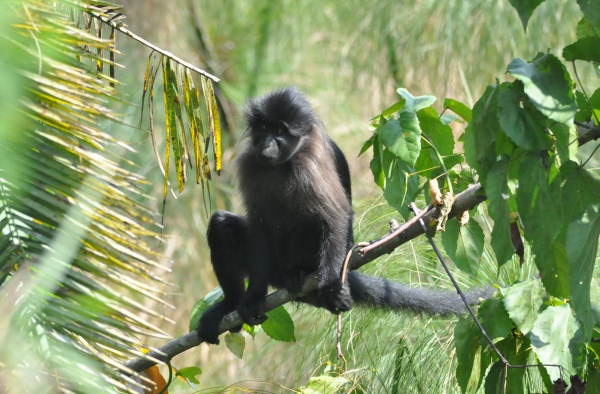Facts About Grey-cheeked Magabey
The grey-cheeked mangabey, often referred to as the white-cheeked mangabey, is a captivating Old World monkey that inhabits the verdant forests of Central Africa, ranging from Cameroon to Gabon. Picture a small, hirsute baboon with dense, dark brown fur that appears nearly black in the dim forest light, accentuated by a striking rufous or golden mane around its neck.
These monkeys inhabit a variety of forest environments, including swampy areas, primary forests, and even some secondary forests. While it was previously believed that they remained primarily within the forest canopy, recent observations of habituated groups have revealed that they also forage on the forest floor. Their diet is remarkably varied, with a primary focus on fruits such as figs, but also comprising other seasonal fruits, shoots, flowers, and insects.
Grey-cheeked mangabeys are social creatures, living in groups ranging from 5 to 30 individuals. These groups can include either a single male or multiple males, without a clear dominant leader. Young males leave their natal groups upon maturity to join new ones, whereas females typically remain with their birth group. When a group becomes too large, it may split into smaller groups. These mangabeys tend to avoid other groups, making interactions between different troops rare. Their territories, which can cover several square miles of forest, often overlap with those of other groups and can shift over time.
Interestingly, what were once considered three subspecies of the grey-cheeked mangabey have been reclassified. In 2007, primatologist Colin Groves recognized them as separate species, splitting one subspecies (johnstoni) into two distinct species.

 Democratic Republic of the Congo
Democratic Republic of the Congo